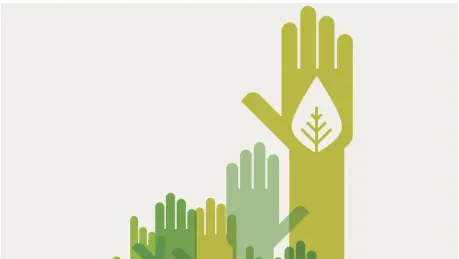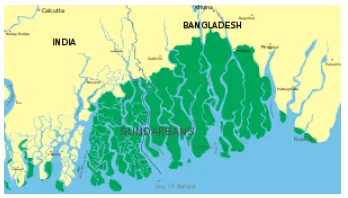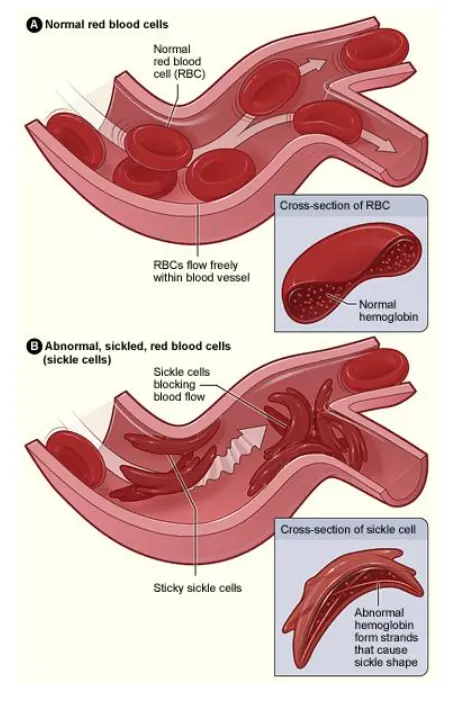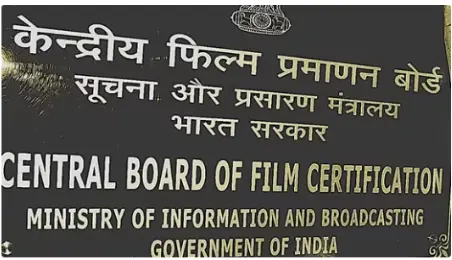Monday, 1st April 2024
Use Of AI In Elections
In News: As AI progresses from Generative Artificial Intelligence (GAI) to Artificial General Intelligence (AGI), its influence on elections, particularly highlighted by India's upcoming polls, emphasizes the urgent need to address its potential impact.
Role of AI in the Electoral Landscape
- Campaign Strategy and Targeting
- Political entities utilize AI algorithms to analyze extensive voter data, including demographics and past behavior, enabling tailored campaign messages and targeted outreach.
- This enhances campaign effectiveness by focusing efforts on specific voter groups.
- Predictive Analytics
- AI-powered predictive analytics forecast election outcomes using various data points such as polling data and sentiment analysis from social media.
- Parties can allocate resources strategically and concentrate efforts on crucial battleground areas.
- Voter Engagement
- AI chatbots engage with voters on social media platforms, providing information about candidates and policies.
- This boosts voter engagement and participation in the electoral process.
- Security and Integrity
- AI tools detect and prevent election fraud, including tampering with electronic systems and spreading disinformation.
- They ensure the integrity of the electoral process by analyzing patterns and anomalies in data.
- Regulation and Oversight
- Governments employ AI to monitor and regulate political advertising, ensuring compliance with electoral regulations.
- AI-powered tools promote transparency and accountability in the electoral process.
Concerns Regarding AI Deployment in Elections
- Manipulation of Electoral Behavior
- AI models can spread disinformation and create deep fake content, potentially manipulating voter behavior.
- This threatens the integrity of elections and erodes public trust.
- Messaging and Propaganda
- AI tools can be used for microtargeting and customization of political campaigns, potentially influencing voters.
- This raises concerns about the fairness and transparency of electoral processes.
- Spreading Disinformation
- AI facilitates the spread of highly personalized propaganda, surpassing traditional methods.
- The proliferation of false information undermines the credibility of elections.
- Inaccuracies and Unreliability
- AI models are not infallible and can produce inaccuracies, leading to potential societal harm.
- Ethical concerns arise regarding the impact of AI on individuals and communities.
- Regulatory Challenges
- Regulating AI in electoral campaigns is challenging due to rapid technological advancements and global online platforms.
- Governments struggle to keep pace with evolving AI techniques, posing regulatory hurdles.
Addressing the Impacts of AI on Elections
- Issuing MCC-like Guidelines
- Establish guidelines to address the misuse of AI for spreading misinformation during elections.
- Require transparency in AI algorithms used for political purposes.
- Education and Media Literacy
- Invest in educational programs to promote media literacy and critical thinking skills among citizens.
- Help voters discern credible sources of information from unreliable ones.
- Enhanced Fact-Checking
- Establish rapid response teams to address the dissemination of fake news and deep fakes.
- Strengthen fact-checking efforts through resources and AI-powered tools.
- Counter-Narratives and Debunking Campaigns
- Launch public awareness campaigns to debunk false information and provide accurate counter-narratives.
- Utilize AI to identify and counter trending misinformation effectively.
- Ethical AI Development
- Encourage the development of AI technologies with ethical considerations.
- Establish standards for responsible AI use in political contexts.
- International Cooperation
- Foster collaboration between governments, tech companies, and international organizations to combat AI-driven election interference.
- Share best practices and coordinate efforts across borders.
Conclusion
AI presents both opportunities and challenges in the electoral landscape. While it enhances campaign strategies and voter engagement, it also raises concerns about manipulation and misinformation. It is crucial for governments and stakeholders to address these concerns through regulation, education, and ethical AI development to uphold the integrity of democratic processes.
|
UPSC Previous Year Questions Prelims (2020) Q. With the present state of development, Artificial Intelligence can effectively do which of the following?
Select the correct answer using the code given below: (a) 1, 2, 3 and 5 only Ans: (b) Mains (2021) Q. What are the main socio-economic implications arising out of the development of IT industries in major cities of India? |
Source: TH
Climate Finance Way to COP 29
In News: The Loss and Damage Fund for climate disaster recovery in developing nations was established during the UN Climate Change Conference (UNFCCC COP 27) held in Sharm El-Sheikh, Egypt.
Addressing Environmental Concerns in Elections
Introduction
The Election Commission of India (ECI) has expressed concerns about the environmental impact of using non-biodegradable materials in elections.
Need for Green Elections
- Traditional election processes contribute to environmental degradation through factors like campaign flights, deforestation for paper-based materials, and energy-intensive rallies.
- The concept of green elections aims to minimize this impact by adopting eco-friendly practices.
Understanding Carbon Footprint
- The carbon footprint measures the impact of human activities on carbon dioxide emissions, including other greenhouse gases.
- It quantifies annual CO2 emissions and encompasses various human activities and entities.
Principles of Green Elections
- Eco-Friendly Campaign Materials: Advocating for the use of recycled materials and biodegradable alternatives.
- Energy-Saving Measures: Opting for energy-efficient lighting, sound systems, and transportation.
- Promotion of Digital Campaigns: Utilizing digital platforms to reduce paper usage and energy consumption.
Successful Eco-friendly Initiatives
- Kerala's Green Campaign: Embraced alternatives to single-use plastic materials during the 2019 general elections.
- Goa's Artisan-Crafted Booths: Introduced eco-friendly booths using biodegradable materials for the 2022 Assembly elections.
- Sri Lanka's Carbon-Sensitive Campaign: SLPP party implemented a carbon-sensitive campaign focusing on carbon emissions and tree planting.
Challenges in Adopting Green Elections
- Access to New Technologies: Ensuring equitable access and providing training for officials.
- Financial Constraints: Overcoming upfront costs and budget allocation challenges.
- Cultural Inertia: Addressing resistance to change and traditional voting practices.
Way Forward
- Multi-Stakeholder Engagement: Involving political parties, election commissions, governments, voters, media, and civil society.
- Legislative Support: Enacting laws mandating eco-friendly electoral practices and incorporating them into the Model Code of Conduct.
- Incentivizing Sustainability: Encouraging the use of sustainable alternatives and promoting digital campaigning.
- Capacity Building: Providing training and support for officials and voters to facilitate the transition to green elections.
Conclusion
Adopting green elections is essential to mitigate environmental impact and promote sustainability in the electoral process. It requires collaborative efforts and innovative solutions to address challenges and ensure a more eco-friendly electoral landscape.
|
UPSC Previous Year Questions Prelims (2016) Q. With reference to the Agreement at the UNFCCC Meeting in Paris in 2015, which of the following statements is/are correct?
Select the correct answer using the code given below: (a) 1 and 3 only Ans: B Mains (2021) Q. Describe the major outcomes of the 26th session of the Conference of the Parties (COP) to the United Nations Framework Convention on Climate Change (UNFCCC). What are the commitments made by India in this conference? Q. Explain the purpose of the Green Grid Initiative launched at the World Leaders Summit of the COP26 UN Climate Change Conference in Glasgow in November 2021. When was this idea first floated in the International Solar Alliance (ISA)? |
Source: IE
Green Elections
In News: The Election Commission of India (ECI) has expressed apprehension regarding the environmental hazards linked with the utilization of non-biodegradable materials in electoral processes.

Environmental Impact of Traditional Elections
- Campaign Flights' Carbon Emissions
- Emissions from campaign flights contribute significantly to the carbon footprint.
- Example: In the 2016 US presidential elections, one candidate's campaign flights equalled the annual carbon footprint of 500 Americans.
- Deforestation and Paper Usage
- Reliance on paper-based materials for ballots, campaign literature, and administrative documents leads to deforestation.
- Production processes are energy-intensive.
- Energy Consumption
- Large-scale election rallies with energy-consuming equipment contribute to energy consumption and emissions.
- Waste Generation
- Disposable items used during campaigns add to waste generation and environmental impact.
Concept of Green Elections:
- Eco-Friendly Campaign Materials
- Adopt sustainable alternatives like recycled paper and biodegradable banners.
- Reducing Energy Consumption
- Opt for energy-efficient lighting, sound systems, and transportation during rallies.
- Promoting Digital Campaigns
- Use digital platforms to reduce paper usage and energy consumption.
#Successful Eco-friendly Electoral Initiatives
- Kerala's Green Campaign
- Ban on single-use plastics during campaigns.
- Promotion of sustainable alternatives like wall graffiti and paper posters.
- Goa's Eco-Friendly Booths
- Introduction of eco-friendly election booths constructed using biodegradable materials by local artisans.
- Sri Lanka's Carbon-Sensitive Campaign
- Measurement and offsetting of carbon emissions from campaign activities.
- Tree planting initiatives to offset emissions.
- Estonia's Digital Voting Revolution
- Introduction of digital voting to reduce environmental impact.
Challenges in Adoption of Green Elections
- Access to New Technologies and Training
- Training election officials and ensuring equitable access to technology.
- Financial Constraints
- Upfront costs of implementing eco-friendly materials and advanced technology.
- Cultural Inertia and Voter Behavior
- Convincing voters of the validity and security of digital alternatives.
- Security Concerns
- Addressing cybersecurity risks and building trust in new systems.
Way Forward:
- Involvement of Stakeholders
- Collaboration among political parties, Election Commissions, governments, voters, media, and civil society.
- Top-Down Directives and Grassroots Initiatives
- Integration of top-level directives with grassroots initiatives for a green transition.
- Role of Political Parties
- Enactment of legislation mandating eco-friendly electoral practices.
- Encouragement of digital campaigning and sustainable practices.
- Supporting Digital Voting
- Education and support for voters.
- Equitable access to digital technology.
- Training and capacity building for officials.
- Promotion of Sustainable Practices
- Incentivizing the use of sustainable materials for polling booths.
- Waste management and support for local artisans.
|
UPSC Previous Year Questions Prelims (2020) Q. Consider the following statements: (2020)
Which of the statements given above is/are correct? (a) 1 only Answer: (d) Prelims (2017) Q2. Consider the following statements:
Which of the statements given above is/are correct? (a) 1 and 2 only Answer: (d) Mains (2017) Q.1 ‘Simultaneous election to the Lok Sabha and the State Assemblies will limit the amount of time and money spent in electioneering but it will reduce the government’s accountability to the people’ Discuss. |
Source: TH
Hepatitis - Edukemy Current Affairs
In News: According to a recent study conducted at Sir Ganga Ram Hospital in New Delhi, it has been found that there is inadequate public awareness and knowledge about Hepatitis B in India, despite it being a potentially fatal disease that can lead to liver cirrhosis and cancer.

Definition and Symptoms of Hepatitis
- Hepatitis is liver inflammation characterized by irritation or swelling of liver cells due to various causes.
- Symptoms may include fever, fatigue, loss of appetite, nausea, vomiting, abdominal pain, dark urine, clay-colored bowel movements, joint pain, and jaundice.
- Some infected individuals may not exhibit symptoms.
Causes of Hepatitis
- Mainly caused by hepatotropic viruses, including hepatitis A, B, C, D, and E.
- Other viruses like the varicella virus can also lead to the disease.
- SARS-CoV-2, the virus causing Covid-19, may also affect the liver.
- Additional causes include drug and alcohol misuse, fatty liver hepatitis, and autoimmune response targeting the liver.
Types of Hepatitis
- Hepatitis A Virus (HAV)
- Transmitted through contaminated food or water and direct contact with an infected person.
- Preventable with a vaccine.
- Hepatitis B Virus (HBV)
- Transmitted from mother to child, through early childhood contact, or via sex or unsafe injections.
- Preventable by vaccines.
- Hepatitis C Virus (HCV)
- Bloodborne virus causing acute and chronic hepatitis.
- Primarily transmitted through unsafe healthcare, blood transfusions, injection drug use, and sexual practices.
- Curable with Direct-Acting Antiviral Medicines (DAAs).
- Hepatitis D Virus (HDV)
- Depends on hepatitis B virus (HBV) for replication.
- Affects individuals with chronic HBV infection, posing a severe risk to liver health.
- Hepatitis E Virus (HEV)
- Globally prevalent, particularly in East and South Asia.
- Transmitted through contaminated water.
- Vaccine available in some countries with ongoing research for additional vaccines.
Government Initiatives to Tackle Hepatitis
- National Viral Hepatitis Control Program: Aims to eliminate viral hepatitis as a public health threat in the country by 2030.
- India's Universal Immunization Programme (UIP): Offers free vaccination against Hepatitis B among other vaccine-preventable diseases.
Global Initiatives:
- WHO’s Global Hepatitis Strategy
- Coalition for Global Hepatitis Elimination (CGHE)
- Global Hepatitis Programme
|
UPSC Previous Year Questions Prelims (2019) Q. Which one of the following statements is not correct? (a) Hepatitis B virus is transmitted much like HIV. (b) Hepatitis B unlike Hepatitis C, does not have a vaccine. (c) Globally, the number of people infected with Hepatitis B and C viruses arc several times more than those infected with HIV. (d) Some of those infected with Hepatitis B and C viruses do not show the symptoms for many years Ans: (b) Prelims (2013) Q. Which of the following diseases can be transmitted from one person to another through tattooing?
Select the correct answer using the codes given below: (a) 1 only Ans: (b) |
Source: DTE
Fish Otoliths
In News: A new market has emerged for ornaments made from fish otoliths, created by a group of passionate fisherwomen in Vizhinjam. These women received training from scientists at the Central Marine Fisheries Research Institute (CMFRI).

About Fish Otoliths
- Otoliths, also called "ear stones," are mineralized structures in bony fish ears, crucial for hearing and balance.
- Three types of otoliths exist:
- Sagitta: Largest pair, responsible for detecting sound waves and aiding in hearing.
- Asteriscus: Also involved in sound detection and hearing.
- Lapillus: Assists in sensing gravitational force and sound.
- Otoliths vary in size and shape among fish species, with cartilaginous fish lacking them entirely.
- Otolith analysis helps:
- Identify fish species accurately.
- Determine individual fish age and growth rate.
- Understand seasonal patterns and water temperature of fish habitats.
- Otolith studies are vital for fisheries management, ecology, and aquatic ecosystem understanding.
- They aid in monitoring fish populations, tracking environmental changes, and guiding conservation efforts.
Source: TH
Financial Action Task Force
In News: The Financial Action Task Force (FATF) has identified that numerous countries have not yet fully enforced its stipulations designed to prevent the misuse of virtual assets and virtual asset service providers (VASPs).
Understanding the Financial Action Task Force (FATF)
- Overview
- FATF is an inter-governmental body focused on policymaking and setting standards to combat money laundering and terrorist financing.
- Objective
- Establish international standards and promote policies globally to combat money laundering and terrorism financing.
- Origin
- Established in 1989 during the G7 Summit in Paris with an initial focus on money laundering.
- Expanded mandate in 2001 to include terrorism financing.
- Headquarters
- Based in Paris, France.
- Membership
- Includes 39 countries such as the United States, India, China, Saudi Arabia, Britain, Germany, France, and the EU.
- India became a member in 2010.
- FATF Lists
- Black List
- Consists of Non-Cooperative Countries or Territories (NCCTs) supporting terror funding and money laundering.
- Regularly revised by FATF, adding or removing entries.
- Grey List
- Includes countries considered safe havens for terror funding and money laundering.
- Serves as a warning to potential entry into the blacklist.
- Current Blacklisted Countries
- North Korea, Iran, and Myanmar.
- Consequences of Blacklisting
- Loss of financial aid from IMF, World Bank, ADB, and EU.
- Faces international economic and financial restrictions and sanctions.
Source: TH
Konda Reddi Tribe
In News: The indigenous wisdom of the Konda Reddi tribe, residing in the Papikonda hill range within the Godavari region, has demonstrated its value.

Overview of the Konda Reddi Tribe
- Habitat
- The Konda Reddis, a Particularly Vulnerable Tribal Group, reside along the banks of the river Godavari and in the hilly forest areas of Godavari and Khammam districts in Andhra Pradesh.
- Language and Culture
- Their primary language is Telugu, spoken in its purest form with a distinct accent.
- The tribe is divided into exogamous septs for managing marital relationships.
- Surnames are prefixed to individual names, and certain septs have restrictions on marriage alliances.
- Family Structure and Marriage Practices
- The family structure is patriarchal and patrilocal.
- While monogamy is the norm, polygamous families exist.
- Marriage practices include negotiation, love, elopement, service, capture, and exchange.
- Religion
- The Konda Reddi tribe follows Folk Hinduism, characterized by local traditions and worship of community deities.
- Political Organization
- Social control is maintained through the 'Kula Panchayat'.
- Each village has a traditional headman known as 'Pedda Kapu', who also serves as the village priest.
- The position of headman is hereditary.
- Livelihood
- Primarily engaged in shifting cultivation.
- Dependence on forest flora and fauna for sustenance.
- Supplement income by collecting and selling non-timber forest produce.
- Main crops cultivated include jowar, which serves as their staple food.
Source: TH
Madagascar
In News: Recently, Madagascar's disaster management office reported that Cyclone Gamane, which traversed the island, resulted in the deaths of at least 18 individuals and forced thousands more to flee their homes.

Overview of Madagascar
- Location and Size
- Situated in the Indian Ocean off the coast of East Africa, Madagascar is the world's second-largest island country.
- It spans an area of 592,800 square kilometers.
- Geography
- Madagascar can be delineated into three longitudinal physiographic regions:
- The eastern coastal strip.
- The central plateau.
- The western low plateaus and plains.
- The Tsaratanana Massif in the north houses Maromokotro, the island's highest point at 2,876 meters.
- History
- France colonized Madagascar in 1883, officially declaring it a French colony in 1896.
- The Malagasy Uprising occurred in 1947 post-World War II, leading to Madagascar's independence in 1960.
- Capital and Languages
- Capital: Antananarivo
- Official Languages: Malagasy, French
- Government
- Madagascar operates as a semi-presidential republic.
- The public elects a president, who appoints a prime minister to form a cabinet and advise the president.
- Economy
- Eighty percent of Madagascar's economy revolves around agricultural industries, including forestry and fishing.
- Key agricultural exports include coffee, vanilla, and sugarcane.
- Biodiversity
- The island features diverse landscapes such as rainforests, deserts, and grassy plains, alongside coral reefs and mangrove forests along its coasts.
- Approximately 90 percent of Madagascar's flora and fauna are endemic to the island due to its isolation from the African continent.
Source: IT
Central Pollution Control Board
In News: So far, only 20 percent of the funds collected through the environment protection charge and environmental compensation by the Central Pollution Control Board (CPCB) have been utilized for mitigating air pollution in Delhi-NCR and environmental protection.
Central Pollution Control Board (CPCB): Ensuring Environmental Compliance
- Establishment and Mandate
- Established in September 1974 under the Water (Prevention and Control of Pollution) Act, 1974.
- Entrusted with powers and functions under the Air (Prevention and Control of Pollution) Act, 1981.
- Provides technical services to the Ministry of Environment, Forests, and Climate Change (MOEFCC) and advises the Central Government on pollution prevention and control.
- Principal Functions
- Promotes cleanliness of streams and wells by preventing, controlling, and abating water pollution.
- Improves air quality and prevents, controls, or abates air pollution nationwide.
- Standardization Activities
- Lays down standards for streams, wells, and air quality in consultation with State Governments.
- Prepares manuals, codes, and guidelines for sewage and trade effluent treatment, stack gas cleaning devices, and more.
- Develops standards in nine categories, including national ambient air quality, water quality criteria, emission norms for industries, and vehicle emissions.
- Comprehensive Industry Document Series (COINDS)
- Formulates Minimal National Standards (MINAS) specific to various industries for effluent discharge, emissions, noise levels, and solid waste management.
- State Governments are required to adopt these standards as minimal requirements for industries.
Source: ET
Onyx Missile
In News: A new target seeker is set to enhance the lethality of Russia's Onyx supersonic cruise missile, known for its frequent strikes on Ukrainian targets in Odesa near the Black Sea.

Overview of the Onyx Missile
- Introduction
- The P-800 Onyx missile, also referred to as Oniks, is a supersonic medium-range cruise missile developed by Russia.
- Purpose
- It is engineered to engage surface ship groups and eliminate ground targets even under conditions of intense fire and electronic countermeasures.
- Key Features
- Supersonic Speed: Capable of reaching speeds exceeding 3,000 km/h, making interception highly challenging.
- Low Altitude Operation: Operates at an altitude of 10-15 meters above land or water, enhancing stealth capabilities.
- Range
- Default Trajectory: Up to 300 kilometers.
- Low-Altitude Trajectory: Up to 120 kilometers.
- Launch Platforms: Deployable from surface ships, submarines, and land-based equipment.
- Guidance System: Self-guided munition, employing the "shoot and forget" principle.
- Targeting Efficiency: Requires minimal target information for successful strikes, distinguishing it from other missiles.
Source: ET
1920: The start of India’s election journey
In News: Edwin Montagu, instrumental in facilitating the 1920 elections, stressed the significance of providing truthful education to the electorate and cautioned against the influence of racial or religious biases.
Montagu-Chelmsford Reforms and Electoral Framework in India
Background and Recommendations
- The Montagu-Chelmsford report of 1918 critiqued the 1909 election process, citing its representation of special interests rather than the broader populace.
- It proposed the establishment of a national legislature with two Houses, one directly elected by the people, and recommended setting up elected legislatures at the state level.
- These recommendations were incorporated into the Government of India Act 1919, necessitating a comprehensive electoral framework for large-scale elections.
Components of the Electoral Framework
- The 1919 law outlined qualifications for voting and contesting elections, including British subject status, minimum age requirements, and removal of sex disqualification for women by state legislatures.
- Constituencies were delineated, encompassing various categories such as Muhammadan, non-Muhammadan (rural and urban), Sikh, European, Landholders, and Chambers of Commerce.
- Eligibility criteria based on domicile, income, and property ownership were established for voters and candidates.
Transition to Direct Elections
- The 1920 elections marked the transition to direct elections in India, replacing the previous policy of selecting educated Indians for legislatures.
- Public demand for increased Indian representation led to the limited elections of 1909, which included a separate electorate for Muslims.
- Mahatma Gandhi's non-cooperation movement in August prompted prospective candidates to boycott the elections, leading to instances of violence and resentment towards the British government.
Challenges and Learnings
- The election process faced challenges, including violence sparked by non-cooperation advocates and controversies surrounding the reform process.
- Despite increased Indian representation in the legislature post-1919, voting rights remained limited.
- Legal provisions to combat corrupt practices during elections were introduced, laying the groundwork for ensuring free and fair elections.
- Post-independence, India's Parliament strengthened electoral laws, notably enrolling all citizens over 18 years old to vote, leading to a significant increase in the number of voters in subsequent elections.
|
UPSC Previous Year Questions Prelims (2021) Q. Consider the following statements: 1. The Montagu-Chelmsford Reforms of 1919 recommended granting voting rights to all the women above the age of 21. 2. The Government of India Act of 1935 gave women reserved seats in legislature. Which of the statements given above is/are correct? (a) 1 only (b) 2 only (c) Both 1 and 2 (d) Neither 1 nor 2 Prelims (2012) Q. Which of the following is/are the principal feature(s) of the Government of India Act, 1919? 1. Introduction of diarchy in the executive government of the provinces 2. Introduction of separate communal electorates for Muslims 3. Devolution of legislative authority by the centre to the provinces Select the correct answer using the codes given below: (a) 1 only (b) 2 and 3 only (c) 1 and 3 only (d) 1, 2 and 3 Mains (2017) Q. To enhance the quality of democracy in India the Election Commission of India has proposed electoral reforms in 2016. What are the suggested reforms and how far are they significant to make democracy successful? |
Source: IE
Share the article
Edukemy’s Current Affairs Quiz is published with multiple choice questions for UPSC exams
MCQ
Get Latest Updates on Offers, Event dates, and free Mentorship sessions.

Get in touch with our Expert Academic Counsellors 👋
FAQs
UPSC Daily Current Affairs focuses on learning current events on a daily basis. An aspirant needs to study regular and updated information about current events, news, and relevant topics that are important for UPSC aspirants. It covers national and international affairs, government policies, socio-economic issues, science and technology advancements, and more.
UPSC Daily Current Affairs provides aspirants with a concise and comprehensive overview of the latest happenings and developments across various fields. It helps aspirants stay updated with current affairs and provides them with valuable insights and analysis, which are essential for answering questions in the UPSC examinations. It enhances their knowledge, analytical skills, and ability to connect current affairs with the UPSC syllabus.
UPSC Daily Current Affairs covers a wide range of topics, including politics, economics, science and technology, environment, social issues, governance, international relations, and more. It offers news summaries, in-depth analyses, editorials, opinion pieces, and relevant study materials. It also provides practice questions and quizzes to help aspirants test their understanding of current affairs.
Edukemy's UPSC Daily Current Affairs can be accessed through:
- UPSC Daily Current Affairs can be accessed through Current Affairs tab at the top of the Main Page of Edukemy.
- Edukemy Mobile app: The Daily Current Affairs can also be access through Edukemy Mobile App.
- Social media: Follow Edukemy’s official social media accounts or pages that provide UPSC Daily Current Affairs updates, including Facebook, Twitter, or Telegram channels.






